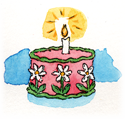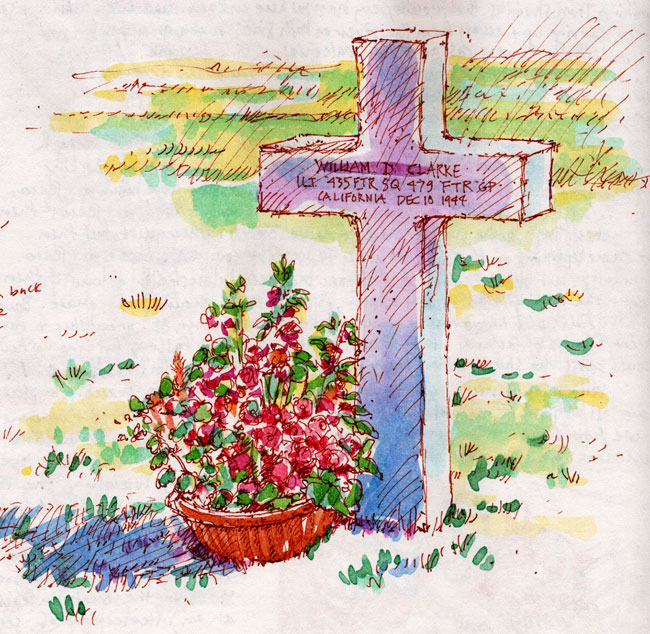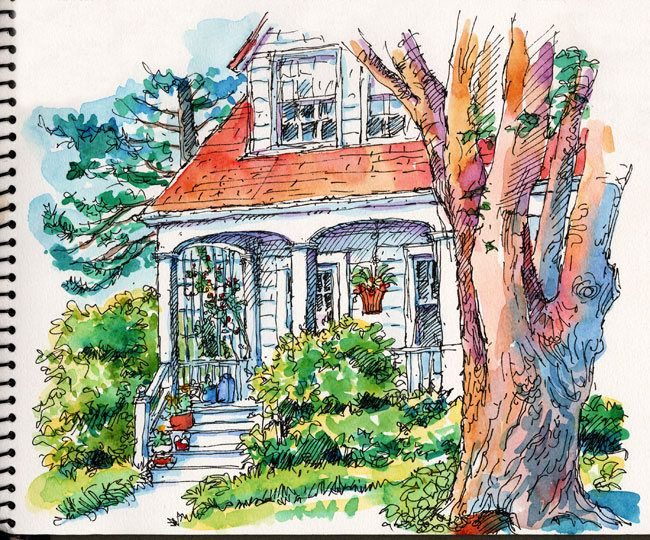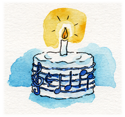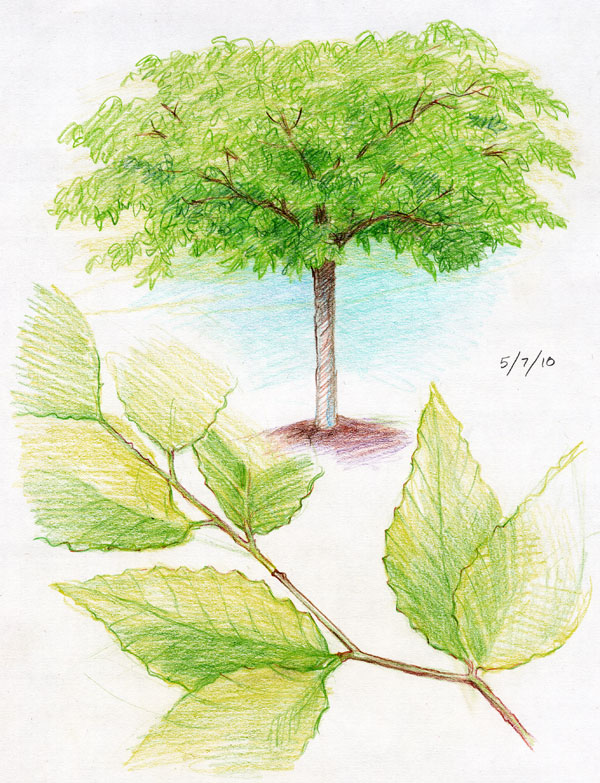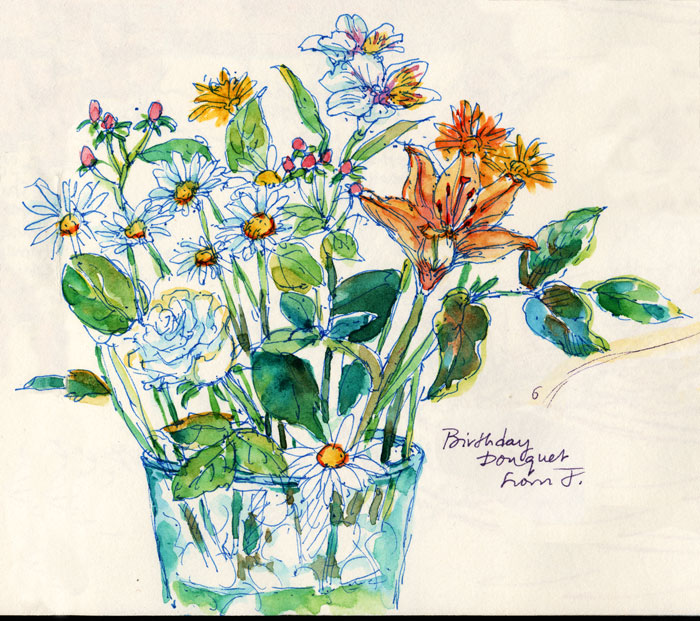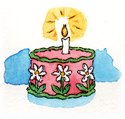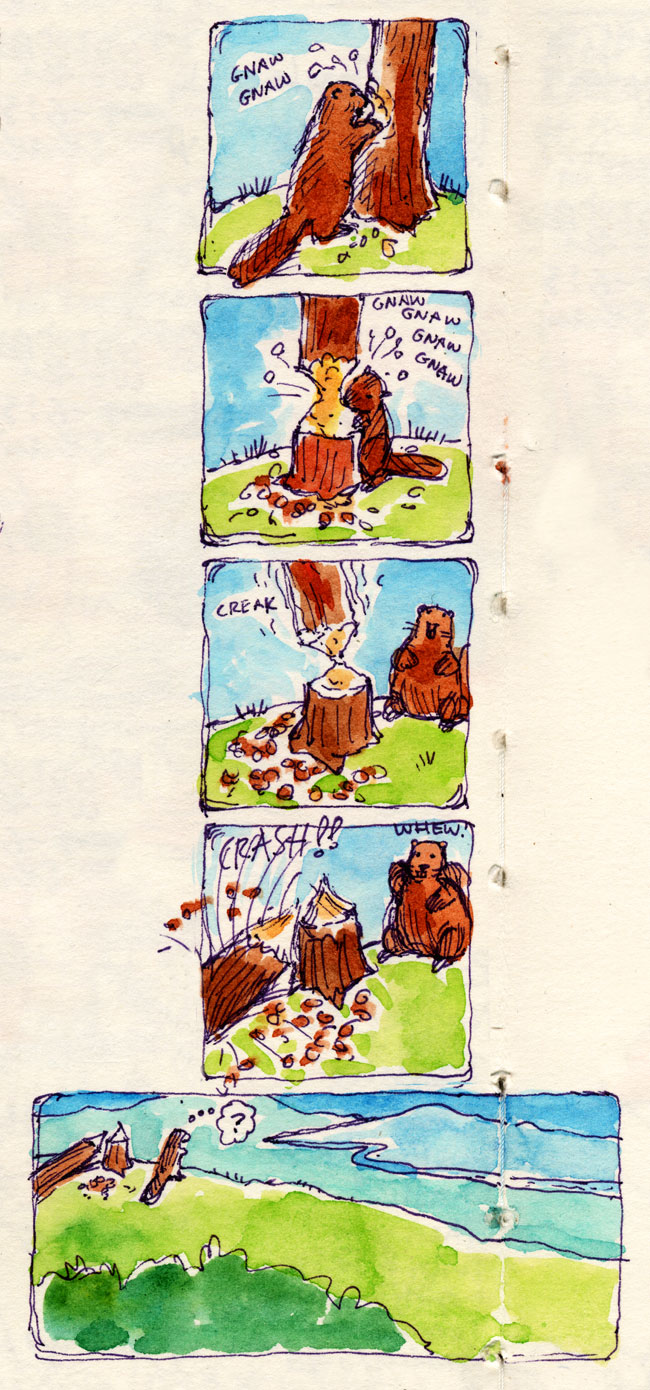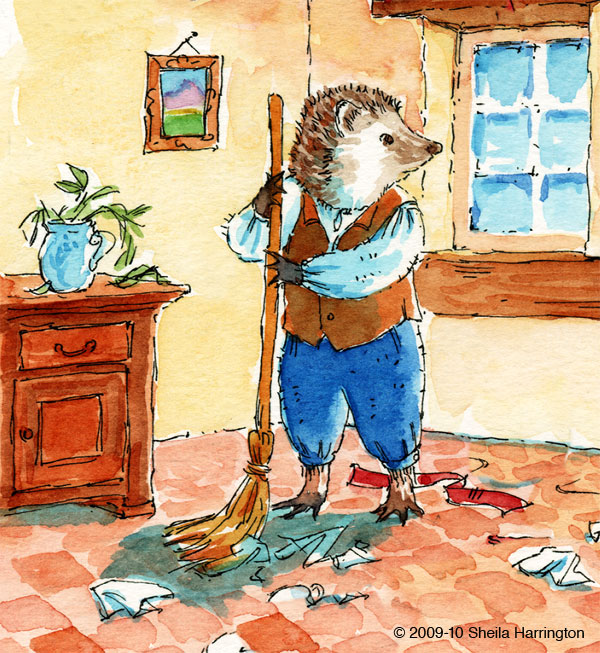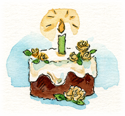This is a drawing of Trifolium repens (Three leaves, creeping), otherwise known as white clover, from our Botany block. My daughter has been growing her very own patch of it in the garden, and it’s doing a lot better than the arugula.
I post this drawing because Trifolium repens was personally given its name by none other than…the Prince of Binomial Nomenclature.

Wouldn’t Prince of Binomial Nomenclature be an awesome title for a work of sophisticated tween fantasy literature? An unknown yet gifted Swedish youth—the future Prince—ventures forth into the wilderness, despite the objections of his parents, to make discoveries that change thenceforth the way we look at relationships among all living things on Earth, and founds the Grand Kingdom of Binomial Nomenclature.
This is actually a TRUE story. Today is the birthday of Carl, or Carolus, Linnaeus (1707-1778), who grew up in Stenbrohult, Sweden, in a village surrounded by farmland, woods, and mountains, a made-to-order environment for a future naturalist. But his father and grandfather were both country pastors, and they expected little Carl would follow in their footsteps, so his parents hired a tutor for his pastor-preparatory education.
Carl, however, showed from an early age a distinct inclination to wander off looking at plants. Exasperated, his family sent him away at age nine to a school in town, where classes ran from 6 am to 5 pm and consisted of studying Latin, Greek, and the Bible. Astonishingly, this did nothing to increase Linnaeus’ passion for school (although the Latin came in handy later, as we shall see). Often he skipped class to explore the fields, examining flowers. The only subjects he liked were logic and physics, taught by the town doctor, who lent him books and persuaded Linnaeus’ parents to let him become a doctor instead of a clergyman—this was an age when almost all medicines were plant-based, so knowledge of them was extremely useful—and offered him anatomy and physiology studies until he was ready for University. A doctor! What a crushing disappointment! But they reluctantly agreed.
Linnaeus enrolled first at Lund University, where his father had studied. No one there taught his real interest, botany, but he was befriended by a professor with botany books in his personal library, from which Linnaeus taught himself. When Linnaeus transferred to the University at Uppsala for its botanical gardens, his parents withdrew their financial support. You’re on your own, you little botanist.
So poor that he suffered from malnutrition and patched his shoes with paper, Linnaeus would have withdrawn from school if not for a fortunate meeting with a theology professor who was so taken with Linnaeus’ botanical knowledge that he offered him room and board and found him tutoring work. Grateful, Linnaeus thanked him with the gift of a paper he had written on pollination. Not your typical present (“Happy birthday! I wrote you a paper on pollination!”), but I guess he knew his recipient.
Why pollination? Well, Linnaeus was troubled by the popular methods of plant classification and had begun to ponder a new system. Classification of organisms was hardly a new concept, dating back at least to Aristotle, but naturalists differed on how it ought to be done, and several different systems existed. Was it to be by form? By function? By environment? (One system grouped beavers with fish, because both live in water. For a while the Catholic church permitted beaver to be eaten on fast days. That must have made the Jesuits’ work easier in North America.) What about the problem of naming? The same plant or animal was given a multitude of names in different countries. And what about the absolute flood of new, unfamiliar flora and fauna arriving from expeditions to the Americas? It was overwhelming.
Linnaeus’ paper explained a theory he had developed about the roles of stamens and pistils in plants. The professor, impressed, had it read at the Swedish Royal Academy of Science, and, although Linnaeus was still a student, he was offered a position as a botanical lecturer. His talks drew hundreds of listeners, many times the usual number. This was partly due to the controversial nature of the subject of plant reproduction (a new, hot topic) and partly due to Linnaeus’ unusually poetic and anthropomorphic descriptions of his plant subjects’ structure and habits. “The actual petals of the flower contribute nothing to generation, serving only as bridal beds,” he said. And, “It is time for the bridegroom to embrace his beloved bride and surrender his gifts to her.” That’s my kind of botany class! No wonder he brought in the crowds. Nowadays we can usually mention stamens in public without causing a shiver of excitement. (Correct me if I am wrong here.)
Please see Prince of Binomial Nomenclature: Part 2



